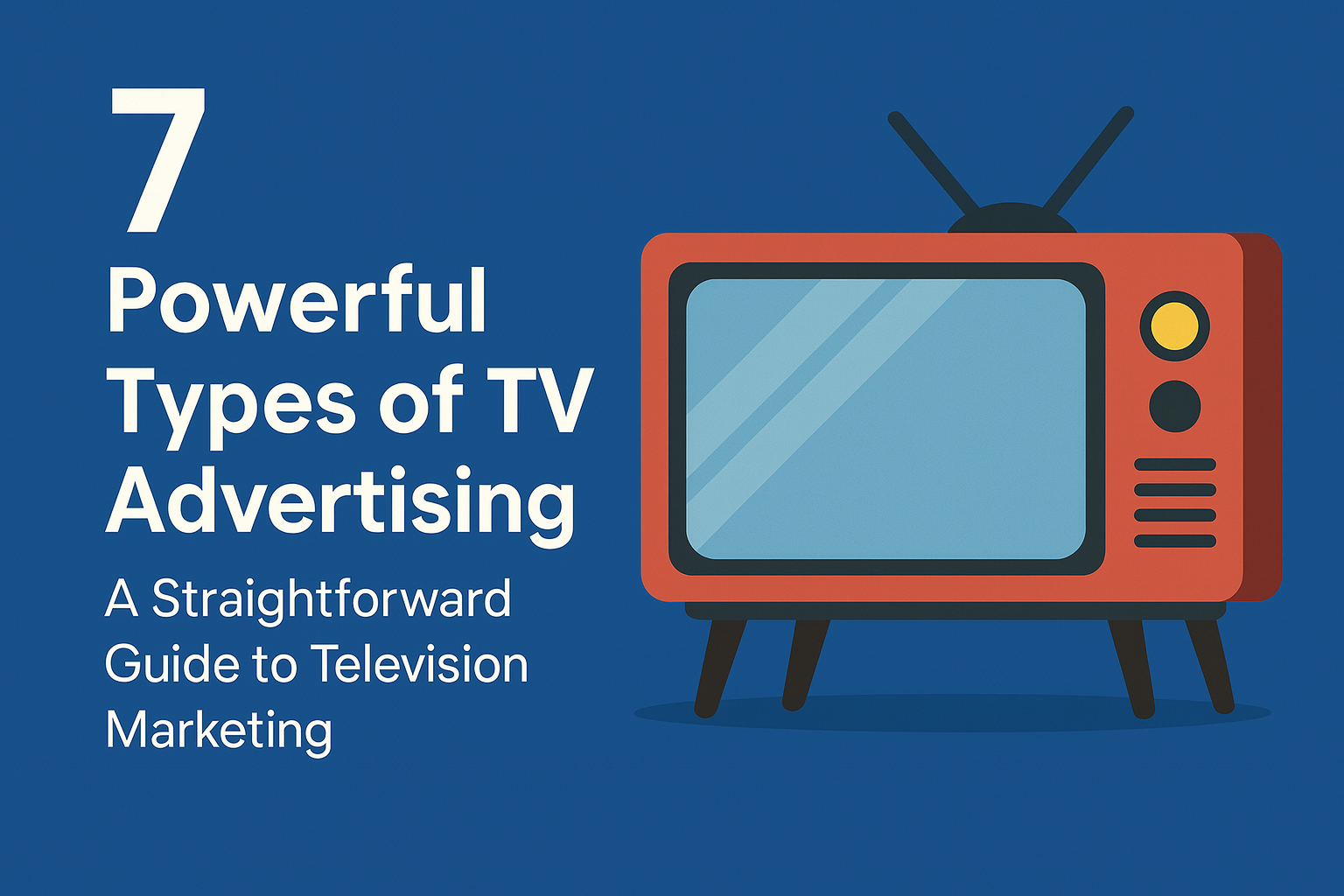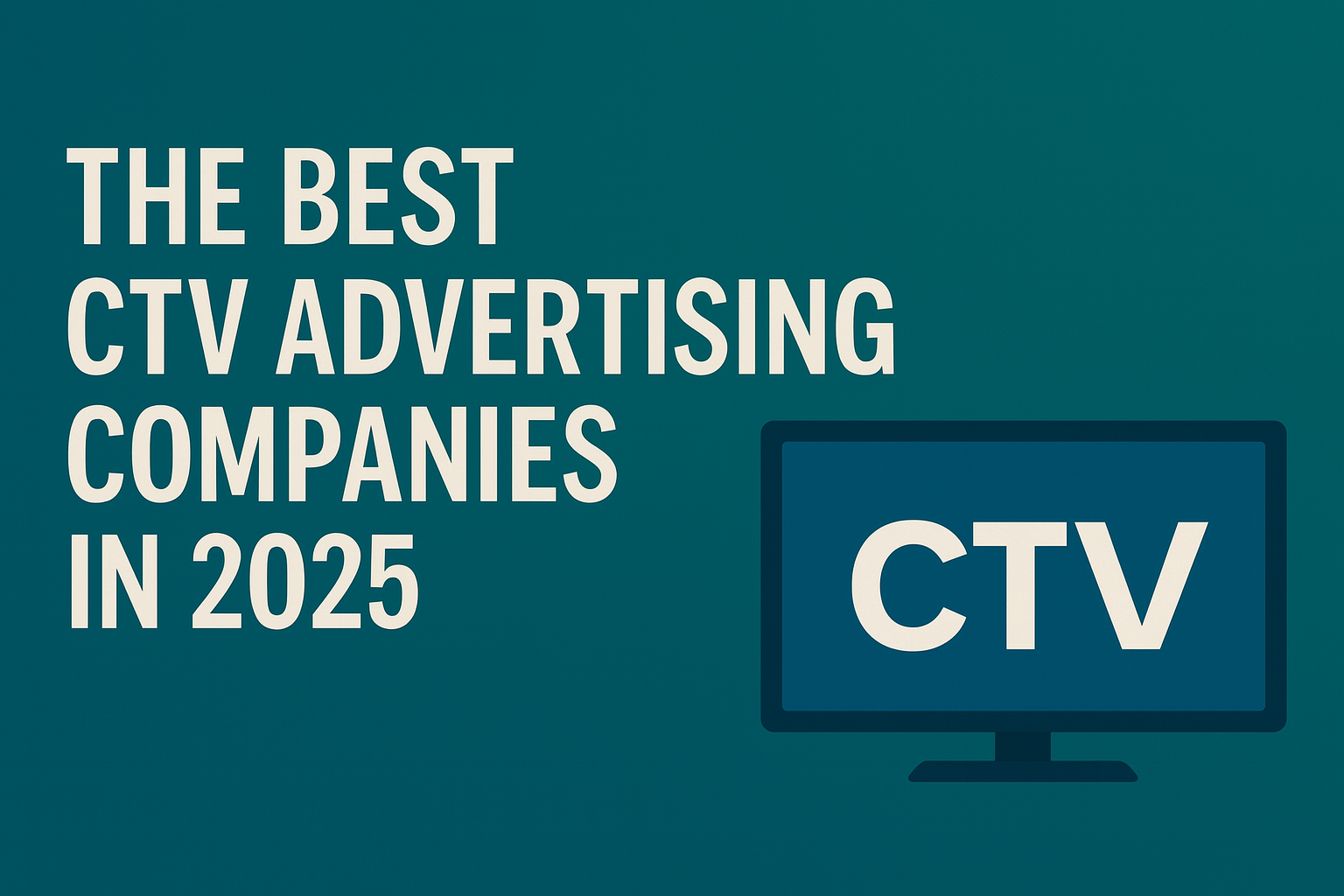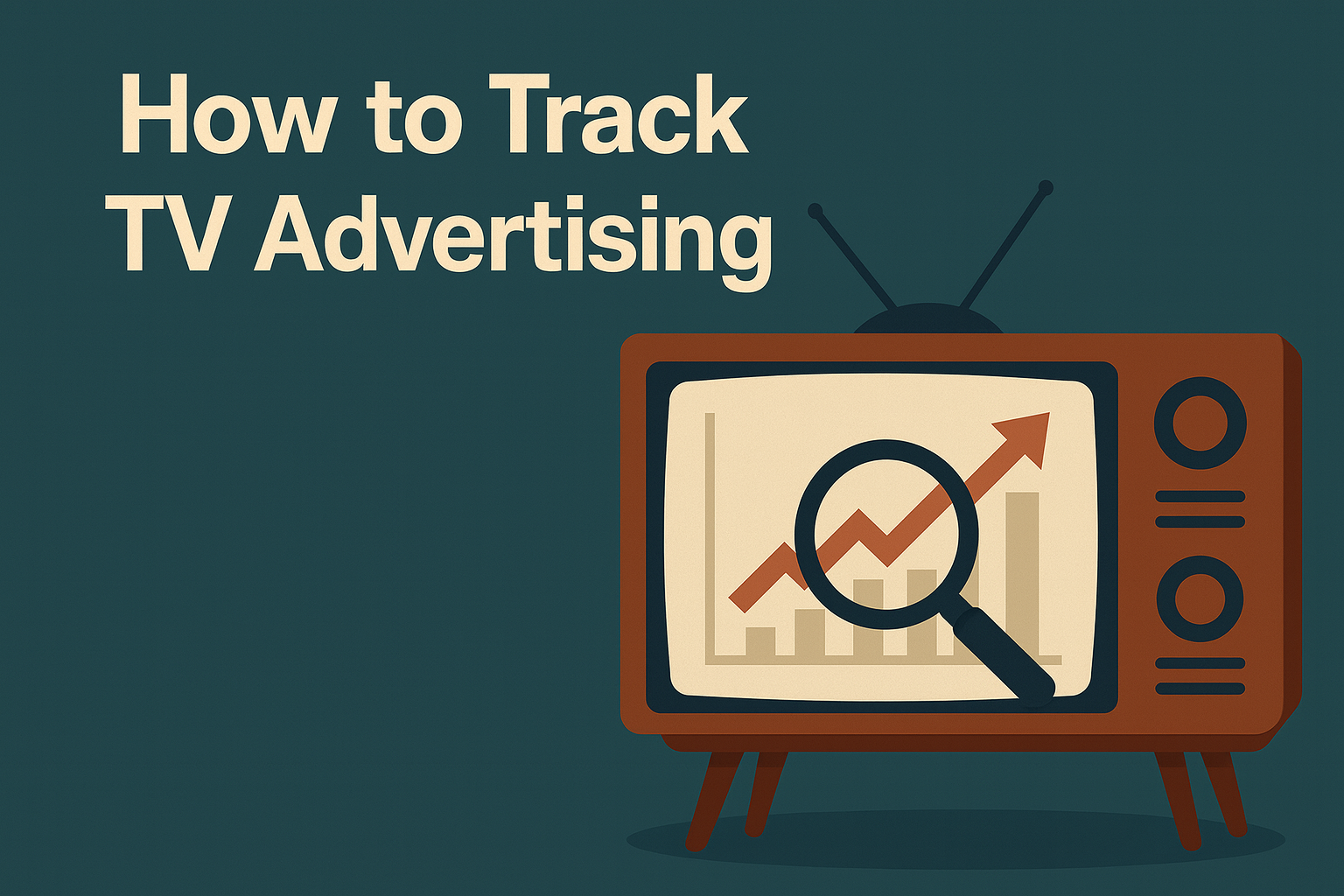Introduction
Television advertising is the practice of using televised commercials to promote products, services, or brands through broadcast, cable, or streaming channels. In this guide, we’ll define television advertising and explore why it remains a critical part of tv marketing. Even in today’s digital age, types of tv advertising continue to deliver reach, engagement, and credibility that few other formats can match.
Why TV Marketing Still Matters in a Digital Age
Despite the surge in online and social media campaigns, television retains a unique ability to captivate large audiences through sight, sound, and motion. Types of television advertising—from classic broadcast commercials to advanced addressable formats—still shape public perception, drive brand awareness, and generate viewer trust. In fact, many marketers find that integrating tv marketing with digital efforts amplifies the impact of both.
Preview of the Types of TV Ads and Their Strategic Uses
In this post, we’ll break down the main types of tv commercials and types of tv ads, including everything from 30‑second national spots to types of tv commercial advertising tailored for streaming platforms. You’ll learn when to deploy each format, how they fit into your marketing mix, and why knowing the right types of television advertising can elevate your brand strategy.
What Is Television Advertising?
Clear Definition of Television Advertising
Television advertising is the paid communication of promotional messages—via televised spots or commercials—intended to inform or persuade audiences about products, services, or ideas. These segments, whether broadcast on network TV, cable, or streaming platforms, are strategically inserted during programming breaks to reach viewers en masse.
Purpose: Promoting Products, Services, or Ideas via Broadcast
At its core, television advertising serves as a marketing tool to raise awareness, build brand credibility, and drive action. Whether a national brand unveiling a new product or a public-service announcement encouraging healthy behavior, the aim is to capture attention and influence viewer behavior.
Brief History and Evolution of TV Marketing
- The first paid TV commercial aired in the U.S. on July 1, 1941—from Bulova watches—costing just $4–$9, marking the start of television as an advertising medium
- The 1950s ushered in the “Golden Age of TV advertising,” with iconic brands like Coca-Cola and tobacco companies fueling rapid growth in broadcast spots .
- As cable, DVR, and streaming platforms emerged, advertising strategies evolved—from broad “spray and pray” approaches to today’s precision-targeted, addressable TV ads
Difference Between TV Advertising and TV Marketing
While “television advertising” specifically refers to the ads themselves—the creative messages shown on TV—“TV marketing” is a broader concept encompassing the planning, strategy, budgeting, channel selection, campaign evaluation, and integration of television efforts within a wider marketing mix. In short, TV advertising is a component of TV marketing, whereas TV marketing covers the end-to-end process of leveraging television includes planning, execution, and measurement.
Why Brands Still Use TV Ads
Reach and Impact of Television
Television advertising remains one of the most effective ways for brands to reach large audiences quickly. With millions viewing live broadcasts and taped programming daily, TV ads deliver unmatched scale. High-profile events like the Super Bowl and awards shows attract record viewership, giving advertisers the chance to make memorable impressions. This broad reach not only builds mass awareness but also enhances brand prestige.
Audience Targeting Through Media Buying
Brands tailor their television advertising strategies at different geographic levels:
- National buys reach viewers across the entire country, ideal for global brands looking for consistent messaging.
- Regional buys target specific states or broadcast areas, ideal for campaigns in targeted markets like Midwestern states or coastal regions.
- Local buys focus on neighborhoods or cities using local broadcast and cable channels, perfect for small businesses, real estate, local events, or political campaigns.
This media buying flexibility allows brands to align budgets, messages, and audience reach precisely with campaign goals.
Integration with Digital Campaigns
Television advertising now plays a key coordination role in cross-channel marketing:
- Driving online traffic: Including QR codes or voice search prompts in TV ads helps viewers engage digitally.
- Boosting social and search: TV ads often spark spikes in social media mentions and search interest, enhancing visibility across channels.
- Retargeting viewers online: Brands can use viewer data to retarget audiences who saw TV commercials, reinforcing messages via digital ads on mobile, desktop, or streaming platforms.
By combining the massive reach of television with digital precision, brands maximize impact, visibility, and ROI, ensuring TV ads remain a vital component of modern marketing strategies.
Main Types of TV Advertising
Here are the key types of television advertising that brands use to achieve different goals:
1. Traditional Commercial Spots
These are the most familiar types of TV ads—15-, 30-, or 60-second ad breaks aired during scheduled programming. They’re commonly seen in prime-time slots or high-profile events like the Super Bowl. These types of TV commercial advertising offer broad reach and are perfect for mass-audience awareness campaigns.
2. Sponsorship Advertising
In this type of television advertising, a brand sponsors an entire show or a segment. Viewers will notice the sponsor’s logo on-screen and hear host shout-outs or “brought to you by” mentions. This subtle brand association increases credibility while aligning the brand with the show’s content.
3. Product Placement
Instead of interrupting programming, this type of TV advertising integrates products seamlessly into the storyline or environment—think characters using a specific phone or drinking a branded soda. These natural placements can be less intrusive yet highly effective for reinforcing brand value.
4. Infomercials
These long-format commercials—typically 30 minutes or more—fall under the types of television advertising designed for direct-response marketing. Infomercials blend demonstration and persuasion and often include a clear call to action (e.g., “Call now!”) to drive immediate sales or leads.
5. Interactive TV Ads
An emerging type of television advertising that leverages connected TV and smart-TV technology. These types of TV ads allow viewers to interact—pausing to get more info, click to shop, or request coupons—all using their remote control. This makes the ad experience more engaging and measurable.
6. Addressable TV Advertising
This advanced type of TV commercial advertising delivers targeted ads to individual households based on demographics, location, or viewing behavior. Advertisers benefit from precision, reduced waste, and campaigns optimized for ROI. It’s a powerful blend of broadcast-scale types of television advertising and digital-like targeting.
7. Squeeze-Back and Overlay Ads
These types of TV ads appear as banners or boxes that squeeze the live programming into a smaller portion of the screen. Common during sports or news broadcasts, squeeze-back and overlay ads offer continuous visual exposure while the viewer still enjoys the content.
Choosing the Right Type of TV Ad for Your Brand
Choosing the best type of television advertising depends on your budget, target audience, and marketing goals. Here are key factors to guide your decision:
1. Budget
- Traditional commercial spots (15–60 seconds) during prime time or events like the Super Bowl can be costly. Larger brands with substantial budgets often favor this high-impact type of TV commercial advertising.
- Sponsorships and product placements may offer more cost-effective options, especially in regional shows or niche programming.
- Interactive TV ads and addressable TV advertising require investment in technology and data but allow better targeting and potentially higher ROI.
- Infomercials require production and airtime costs, but their direct-response nature often delivers strong returns for specific product categories.
2. Audience
- Want mass impact? Opt for traditional commercial spots—ideal for general audiences.
- Target engaged viewers of specific content? Sponsorship Advertising connects your brand with related shows (e.g., fitness gear sponsoring a health program).
- Looking to reach specific demographics precisely? Addressable TV advertising lets you tailor messages to households based on age, income, or viewing behavior.
- Want a seamless product presence? Product Placement works naturally within content without disrupting the viewer experience.
3. Goals
- Awareness & reach → go traditional.
- Brand association → Sponsorship or product placement.
- Consumer action → Infomercials and interactive TV ads help drive engagement and sales with direct calls to action.
- Efficiency & personalization → Addressable formats reduce waste and improve targeting.
When to Choose Traditional vs. Modern
- Traditional: Best for brand-building, large-scale reach, or high-visibility launches (premieres, event sponsorships).
- Modern formats like interactive, addressable, product placement, or squeeze‑back overlay ads are ideal when looking for measurable ROI, audience interaction, or integration with digital campaigns.
Example Campaign Mixes
- CPG Brand Launch
- 30-second prime-time traditional spot to drive broad awareness
- Addressable TV advertising to reach households in select metros for sampling
- Interactive ad to offer coupon downloads via smart TV remotes
- Local Auto Dealer Promotion
- Local traditional commercials during weekend sports
- Sponsorship of local news weather segments with on-screen logo
- Product placement in regional lifestyle show (e.g., test drives featured on-air)
- Health Supplement Direct Sales
- Late-night infomercial with a strong direct-response hook
- Squeeze-back overlay ads during daytime programming to reinforce messaging
- Addressable ads to retarget households who clicked or responded
By matching budget, audience, and objectives, you can craft a TV advertising strategy that balances visibility, efficiency, and impact—choosing the right types of television advertising and types of tv ads to achieve your brand goals.
The Future of TV Advertising
1. Streaming & CTV Reshaping the Landscape
The rise of Connected TV (CTV) and streaming is transforming television advertising. In the U.S., streaming now accounts for nearly 44% of total TV viewing—a jump of 10 points since 2023.
- Advertisers are increasing CTV ad spend significantly: about 56% of marketers will boost OTT/CTV budgets this year.
- CTV ad spending in the U.S. is projected to hit $33.4 billion in 2025—a 16% increase year-over-year.
2. Hybrid Models: TV + Digital Integration
Linear television and streaming are converging, driven by hybrid models:
- Ad-supported streaming tiers (SVOD/AVOD hybrids) are now standard. Netflix’s ad tier, in particular, is boosting ad revenue and subscriber engagement.
- Marketers leverage TV ads to trigger online engagement, then retarget viewers digitally for improved ROI.
- Programmatic and biddable inventory expands across platforms, enabling seamless activation across TV and digital.
3. Trends to Watch
🎯 Addressable & Programmatic CTV
- Families can now receive targeted ads based on behavior, location, and interests—shifting ad dollars from broad linear buys to precision-targeted CTV ads.
- Programmatic CTV allows real-time campaign adjustments, performance optimization, and outcome-based metrics like brand lift and incremental ROI.
🛍️ Interactive & Shoppable Ads
- Viewers can interact with ads: click to shop, request coupons, or pause for more info. These are rising in popularity on CTV platforms.
🧠 Generative AI Creative
- Around 86% of advertisers are already using—or planning to use—Generative AI to create video ads, with forecasts showing it will power 40% of video ads by 2026 TV Tech. This boosts efficiency and customization across formats.
🔁 Cross-Screen Measurement & Attribution
- As audiences stream across TVs, mobile, and desktop, robust cross-screen attribution is becoming essential. New identity-resolution tools, data clean rooms, and programmatic measurement methods are closing attribution gaps.
🌍 Virtual & Dynamic Insertion
- Technologies like virtual ad overlays enable real-time region-specific ads during live events—think digital billboards that change depending on the viewer’s location.
4. What It Means for Brands
- Scale + Precision: The broad impact of TV combined with the targeting capabilities of digital.
- Efficiency: More effective budgets through programmatic, addressable ads.
- Measurement: Improved transparency and real-time performance insights.
- Engagement: Interactive formats foster direct viewer response and deeper engagement.
In summary, the future of TV advertising lies in Connected TV, programmatic buying, AI-driven creative, and holistic measurement—melding the mass reach of traditional commercials with the precision, interactivity, and data-driven efficiency of digital. Brands that embrace this hybrid ecosystem will gain a competitive edge and real ROI in a media landscape where screens and formats flow together.
Conclusion
In today’s ever-evolving media landscape, understanding the various types of television advertising is crucial for brands aiming to maximize reach and ROI. From classic types of TV ads like 30-second commercial spots to emerging formats such as interactive TV ads and addressable TV advertising, each offers unique advantages depending on your objectives, audience, and budget.
Selecting the right types of TV commercials—whether it’s traditional, product placement, sponsorship, infomercial, or programmatic—is more than just a media decision. It’s a strategic move that directly influences how your brand is perceived and how effectively it connects with your target market.
As TV advertising continues to integrate with digital platforms and embrace technologies like CTV and AI, its role in a multi-channel marketing strategy has only grown stronger. Smart, targeted use of various types of TV commercial advertising ensures your message not only reaches but resonates with the right people, at the right time, on the right screen.
Television advertising is no longer just about broad appeal—it’s about strategic placement, measurable impact, and holistic integration.
FAQs
1. What is television advertising?
Television advertising is a form of marketing where businesses promote products, services, or messages through commercial spots aired on TV networks. These ads can vary in length, format, and placement.
2. How does TV marketing work?
TV marketing works by placing ads during specific time slots to target a chosen audience. Brands use demographic data, viewing habits, and program ratings to choose when and where their commercials will air.
3. What are the main types of TV advertising?
The main types of TV advertising include traditional commercials, sponsorships, product placements, infomercials, interactive ads, and addressable TV advertising.
4. What are traditional types of TV ads?
Traditional types of TV ads are standard commercial spots that run during scheduled breaks—typically 15, 30, or 60 seconds long. These are what most viewers think of as classic TV commercials.
5. What is the difference between TV advertising and TV marketing?
TV advertising refers to the actual commercial content shown on TV, while TV marketing is the broader strategy that includes planning, targeting, and integrating TV with other media.
6. What types of TV commercials are most effective?
The most effective types of TV commercials depend on the target audience and campaign goals. High-impact spots during major events (like the Super Bowl) and personalized addressable ads tend to perform well.
7. What is product placement in TV advertising?
Product placement is a type of TV advertising where a brand’s product is subtly integrated into the storyline or background of a TV show, rather than shown in a separate commercial.
8. Are infomercials still a valid type of television advertising?
Yes, infomercials are still used, especially for direct-response campaigns. They’re effective for demonstrating products and driving immediate viewer action via phone or web orders.
9. How do addressable TV ads differ from regular types of TV commercial advertising?
Addressable TV ads are targeted to specific households using data like location, income, or interests, while traditional TV ads are shown to all viewers of a program regardless of who’s watching.
10. Which types of TV advertising are best for small businesses?
Small businesses often benefit from local TV spots, sponsorships of regional shows, and addressable TV advertising, which allows for budget-friendly, targeted reach.





8 Responses
This article explains what TV advertising is and why it is still important. It talks about how TV ads can reach many people quickly, which helps brands get noticed.
This post is amazing! I didn’t realize how important TV ads still are today. Keep up the good work!
I found this article very interesting! The different types of ads make me want to learn more about marketing.
Great info! I never knew there were so many types of TV ads. This is super helpful!
I learned that there are different types of TV ads like traditional commercials and product placements. Each type has its own purpose, which is useful for brands to choose the right one.
Wow, I learned a lot about TV advertising! It’s cool to see how it all connects with digital marketing.
I really liked this article! It helped me understand how TV ads work. Thanks for sharing!
The post mentions how TV advertising is changing with new technologies like streaming. It’s interesting to see how brands can now target their ads better to specific audiences.